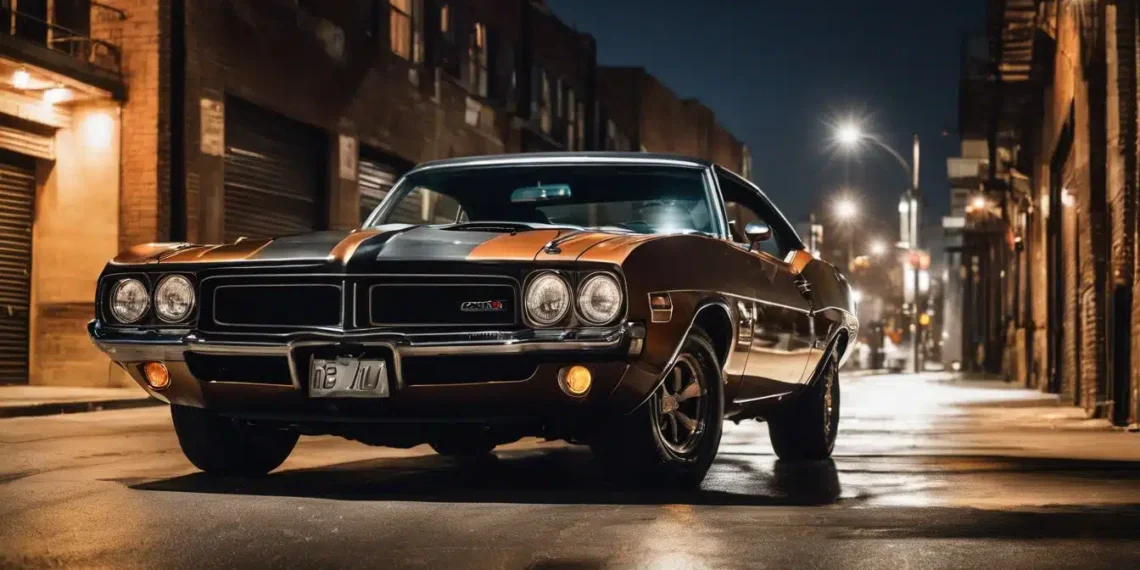The Evolution of Motorsports: From Grassroots to Global Phenomenon
From local races on dirt tracks to globally televised events, motorsports have undergone a dramatic transformation, captivating audiences worldwide and pushing the boundaries of engineering and human skill.
1. The Early Days: A Test of Endurance
Motorsports’ origins can be traced back to the late 19th century, with early races primarily serving as reliability tests for newly invented automobiles. These events, often spanning hundreds of miles over rough terrain, focused on endurance rather than outright speed. The Paris-Rouen race in 1894 is often cited as the first organized motorsport event, marking the beginning of a long and fascinating journey. These races helped to popularize the automobile and spurred innovation in automotive technology.
2. The Rise of Professional Racing
As automobiles became more reliable and powerful, racing evolved from endurance tests to contests of speed and skill. Dedicated racetracks were built, and professional drivers emerged, transforming motorsports into a spectator sport. Iconic races like the Indianapolis 500 and the 24 Hours of Le Mans were established, attracting large crowds and establishing motorsports as a major form of entertainment. Sponsorship began to play a larger role, fueling further technological advancements.
3. Global Expansion and Technological Innovation
The latter half of the 20th century saw motorsports expand globally, with series like Formula 1 and MotoGP gaining immense popularity worldwide. This expansion was driven by increased television coverage and the rise of multinational corporations as sponsors. Technological innovation became a key differentiator, with teams investing heavily in research and development to gain a competitive edge. Aerodynamics, engine technology, and data analysis became increasingly sophisticated, pushing the limits of what was possible.
Tuning Culture: The Art and Science of Personalizing Performance
Tuning isn’t just about speed; it’s a fusion of engineering and artistic expression, where enthusiasts modify their vehicles to reflect individual style and optimize performance.
1. The ECU: Brains of the Operation
The Engine Control Unit (ECU) is the car’s computer, managing everything from fuel injection to ignition timing. “Tuning” the ECU involves remapping its software to optimize performance for specific conditions or modifications. This can unlock hidden horsepower and improve throttle response. However, improper ECU tuning can damage the engine, so it’s crucial to seek experienced professionals. Modern tuning often involves connecting a laptop to the car’s diagnostic port and uploading a new software map.
2. Suspension: Handling the Power
Upgrading the suspension is crucial for harnessing increased power. Lowering springs, adjustable coilovers, and stiffer sway bars can significantly improve handling and reduce body roll. These modifications allow for more precise control and faster cornering speeds. The goal is to maintain optimal tire contact with the road surface, maximizing grip and stability. Suspension tuning is a delicate balance, as overly stiff setups can compromise ride comfort.
3. Exhaust Systems: Breathing Easier
Aftermarket exhaust systems are a popular upgrade for both performance and aesthetics. They are designed to reduce backpressure, allowing the engine to “breathe” more freely. This can result in a modest horsepower gain, particularly when combined with other modifications. Beyond performance, exhaust systems also alter the sound of the vehicle, providing a more aggressive and sporty tone. The choice of materials, such as stainless steel or titanium, can also impact weight and durability.
Car Clubs and Community: Building Bonds Through Shared Passion
Car clubs provide enthusiasts with a platform to connect, share knowledge, and celebrate their love for automobiles. These communities foster camaraderie and offer unique opportunities for social interaction centered around a shared passion.
1. Shared Knowledge and Expertise
Car clubs serve as invaluable resources for automotive knowledge. Members readily share their expertise on vehicle maintenance, modifications, and restoration techniques. This collaborative environment allows individuals to learn from experienced enthusiasts, saving time and money while enhancing their understanding of cars.
2. Social Events and Gatherings
A core function of car clubs is organizing social events. These gatherings range from casual meet-and-greets to elaborate car shows and rallies. These events offer opportunities for members to showcase their vehicles, admire others’ rides, and forge lasting friendships. The shared enthusiasm creates a welcoming and inclusive atmosphere.
3. Driving and Touring Experiences
Many car clubs organize driving tours and scenic cruises. These events allow members to experience the joy of driving with like-minded individuals. Exploring new roads and destinations together enhances the sense of adventure and strengthens the bonds within the community. Some clubs also participate in track days or autocross events, providing a safe and controlled environment for performance driving.
4. Community Involvement and Charity
Beyond personal enjoyment, some car clubs actively engage in community service and charitable activities. They may organize car washes to raise money for local charities or participate in events that support underprivileged children. This commitment to giving back strengthens the club’s connection to the wider community and promotes a positive image of car enthusiasts.
Auto Shows as Cultural Events: Showcasing Innovation and Style
Auto shows are more than just displays of vehicles; they are cultural events that reflect societal values, technological advancements, and evolving design aesthetics, captivating enthusiasts and the general public alike.
1. A Platform for Technological Advancement
Auto shows provide a crucial platform for automakers to unveil their latest technological innovations. These showcases often include advancements in electric vehicle (EV) technology, autonomous driving systems, and connected car features. Automakers use these events to gauge public interest and receive valuable feedback on their concepts and innovations. For example, the Consumer Electronics Show (CES) has increasingly become a venue for automotive tech, demonstrating the convergence of the automotive and technology industries.
2. Reflecting Design Trends and Aesthetics
Auto shows serve as barometers of current design trends. Automakers present concept cars and new models that reflect the prevailing aesthetics of the time. These designs often incorporate elements of luxury, sustainability, and performance, catering to diverse consumer preferences. The events provide a space for designers to receive immediate reactions to their work, influencing future design directions.
3. Cultural and Social Significance
Auto shows are deeply ingrained in car culture, offering a shared experience for enthusiasts and families alike. They foster a sense of community and passion for automobiles, influencing purchasing decisions and shaping perceptions of different brands. These events also contribute to local economies, attracting tourists and generating revenue for surrounding businesses. The social interaction and spectacle of auto shows reinforce the importance of cars in society.
Classic Cars: Preservation and the Timeless Appeal of Automotive Heritage
Classic cars represent more than just transportation; they are tangible links to automotive history, embodying design aesthetics and engineering innovations of bygone eras. Their preservation is vital to understanding and appreciating this heritage.
1. The Allure of Automotive History
Classic cars evoke a sense of nostalgia and represent significant periods in automotive design. From the elegant curves of pre-war vehicles to the powerful muscle cars of the 1960s and 70s, each era tells a story. Owning or restoring a classic car connects enthusiasts to this rich past, allowing them to experience the craftsmanship and engineering of earlier generations. This connection fuels the passion for preserving these vehicles.
2. Restoration and Preservation Efforts
Restoring a classic car is a meticulous process that requires specialized skills and knowledge. It often involves sourcing original parts, repairing damaged components, and carefully recreating original finishes. Preservation, on the other hand, focuses on maintaining the car in its original condition, minimizing alterations. Both approaches are crucial for ensuring that these vehicles remain viable and appreciated for future generations. Car clubs and museums play a vital role in providing resources and expertise for these efforts.
3. The Economic Impact of Classic Cars
The classic car market is a significant economic force, encompassing restoration services, parts suppliers, auction houses, and related industries. According to Hagerty, the classic car market saw continued growth in 2024, with certain segments experiencing increased demand and values. This economic activity supports numerous jobs and contributes to local economies. The appreciation in value of well-preserved or restored classic cars also makes them attractive investments for collectors.
Q&A
Question 1: How has the focus of motorsports evolved from its early days to the present?
Answer: Early motorsports, exemplified by the 1894 Paris-Rouen race, were primarily endurance tests of vehicle reliability over rough terrain. As automobiles improved, the focus shifted to speed and skill, leading to the development of dedicated racetracks and professional drivers. Modern motorsports are globally televised spectacles emphasizing technological innovation and driver expertise.
Question 2: What are some common modifications in car tuning culture, and what are their estimated costs and performance impacts?
Answer: Popular modifications include ECU remapping ($300-$1000, increased horsepower and torque), suspension upgrades ($500-$3000+, enhanced handling), aftermarket exhaust systems ($400-$2000+, slight horsepower gain and improved sound), and aerodynamic kits ($500-$5000+, increased high-speed stability). These modifications aim to enhance both performance and aesthetics.
Question 3: What are the different types of car clubs, and what are their typical activities and membership demographics?
Answer: Car clubs cater to various interests, including make/model specific clubs (focused on specific brands or models), classic car clubs (vintage and classic automobiles), motorsports clubs (racing and performance), and off-road clubs (four-wheel drive vehicles). Activities range from meets and shows to track days, restorations, and trail rides. Membership demographics vary but generally show a higher percentage of male members across all types.
References:
- https://www.instagram.com/p/DLkBw3Wh2xV/
- https://www.globenewswire.com/news-release/2025/07/09/3112696/28124/en/
- https://www.tractionnews.com/new-sema-research-2025-market-report/
- https://www.hagerty.com/media/market-trends/hagerty-insider/12-cars-that-caught-our-eye-at-the-2025-bonhams-goodwood-festival-of-speed-auction/
- https://www.caranddriver.com/news/






